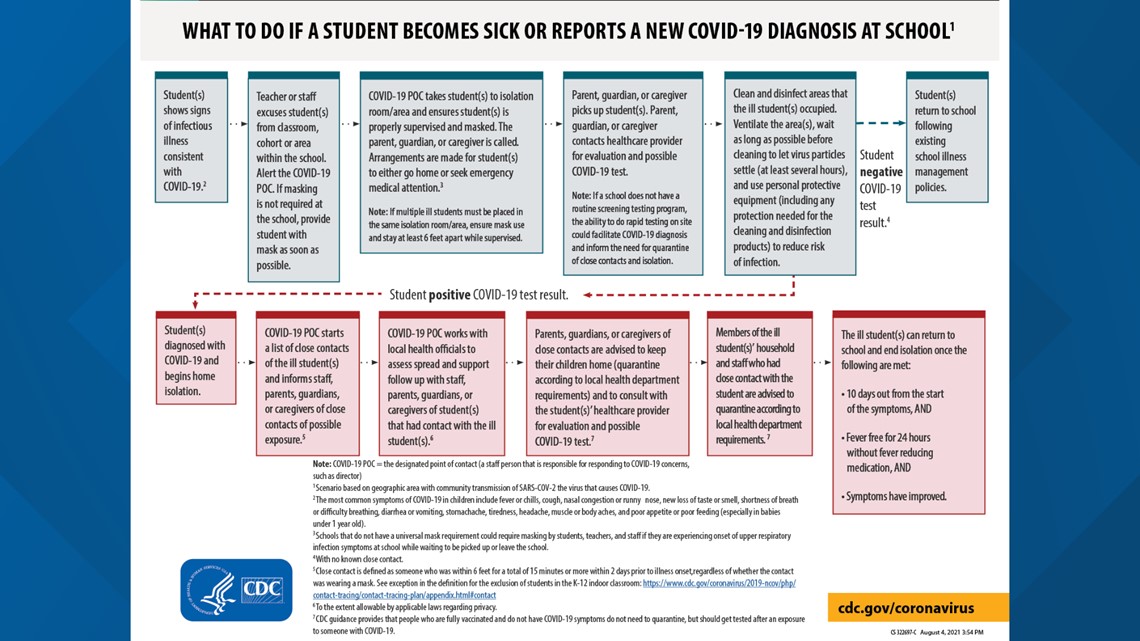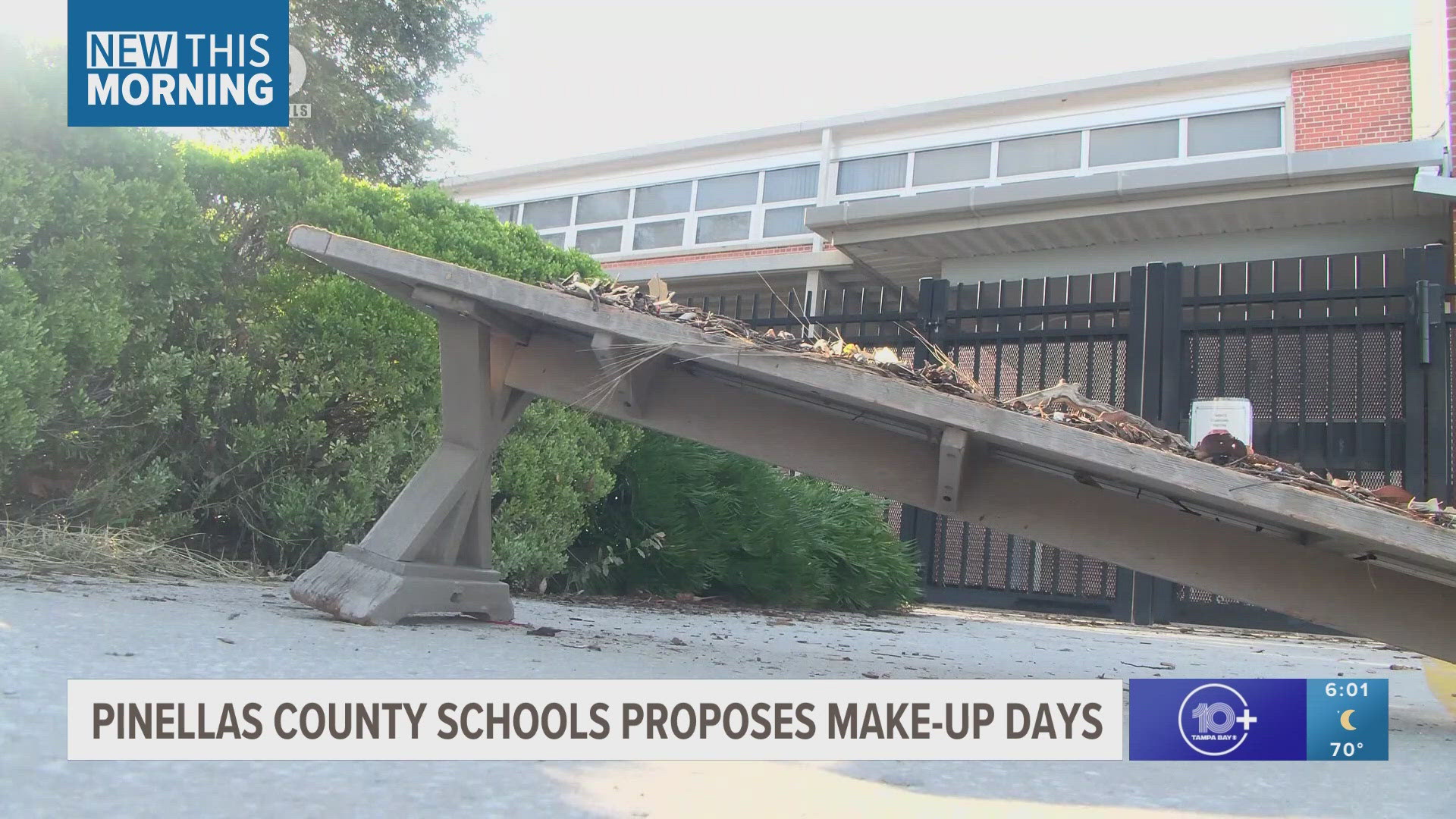ST. PETERSBURG, Fla. — School is back in session, and so are debates on mask-wearing and health protocols when it comes to the spread of COVID-19 in the classroom.
The Centers for Disease Control and Prevention recommends that all teachers, staff, students, and visitors to K-12 schools wear masks, regardless of vaccination status. But, Gov. Ron DeSantis issued an executive order effectively banning mask mandates in Florida schools, making the decision on whether or not to mask up a little more complicated.
As school districts in the Tampa Bay area continue to see a rise in COVID-19 cases among students and staff, you may be wondering what you should do if your child gets sick at school.
Here's a step-by-step guide of the CDC's recommendations:
1. If a student shows signs of illness consistent with COVID-19, their teacher should excuse them from class and provide the student with a mask as quickly as possible if they are not already required to wear one.
2. The teacher should then alert the COVID-19 point of contact, who should take the student to an isolation area and contact the student's parent or guardian to make arrangements for the student to either go home or seek proper medical attention.
3. Once the student is picked up from school, the parent or guardian should get the student tested for COVID-19 as soon as possible. In the meantime, the school should clean and disinfect the area where the student was and work to ventilate the area, all while using proper protective equipment.
If the student tests negative they may return to school, following the school's illness management policies.
If the student tests positive for COVID-19 they should immediately begin home isolation.
- At this point, the school should start compiling a list of other students and staff who may have come into contact with the COVID-positive student and let them know so that they can quarantine until they are able to get tested.
- The COVID-positive student, or students, should only return to school after 10 days since the start of symptoms, the student is fever-free for 24 hours without fever-reducing medication, and symptoms have improved.
These guidelines are what health experts at the CDC recommend, but local protocols may vary from county to county. Parents and guardians should contact their student's school for more information on the steps they're taking.





